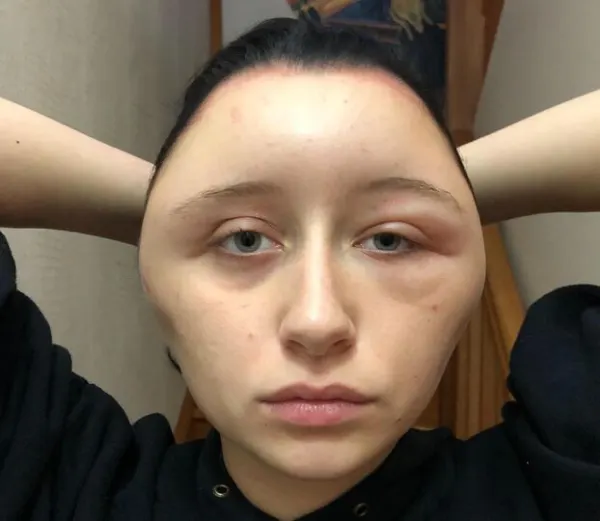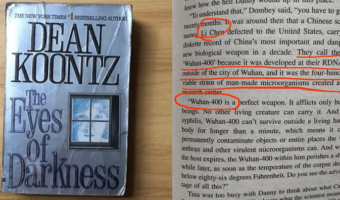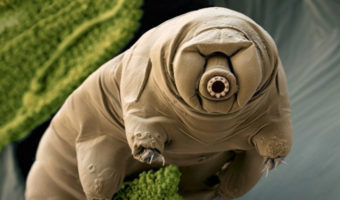At-home Hair Dye Disfigures Teenager’s Head into a Lightbulb Shape
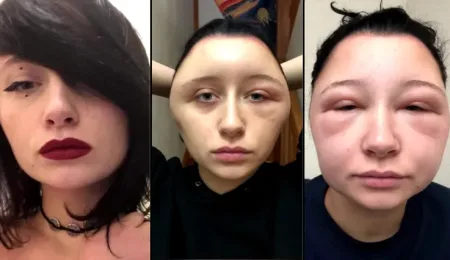
Estelle, a student from Paris, shared shocking photos of her severely swollen head on social media, hoping to raise awareness about allergens present in hair dyes. She also campaigned for the warnings on hair dye packaging to be made more visible.
The photos of her disfigured head went viral on Facebook and drew attention to the risk that comes with coloring hair with permanent dyes. Let’s read her story and find out how the hair dye allergic reaction made her forehead so unusually large.
Table of Contents
In November 2018, French student Estelle almost died from a horrific allergic reaction to at-home hair dye.
Estelle was 19 when she decided to change her hair color from blond to brunette. For the process, she bought at-home hair dye from Val-de-Marne supermarket in Paris, unaware that the kit would alter much more of her looks than just her hair.
Initially, the dye made her scalp itch and the top of her head swell. Assuming the swelling was a mild allergic reaction, she took antihistamines and went to bed, hoping the medication would calm her body.
However, the next morning, Estelle was horrified to see her reflection in the mirror. Her head circumference had ballooned from 56 cm to 63 cm and now resembled a lightbulb. This was far from a typical allergic reaction.
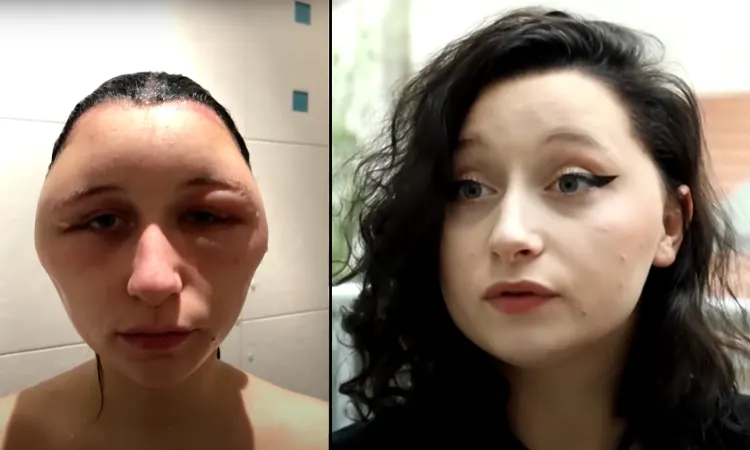
Caregivers in the emergency room determined paraphenylenediamine (PPD), a common ingredient in permanent hair dyes, as the allergen. However, despite the unusual swelling, they dismissed it as a reasonable and common reaction. So, she was given corticosteroids and more antihistamines and sent home.
But Estelle’s condition didn’t improve. In fact, her symptoms worsened the following day. She struggled to breathe, and her tongue swelled while being driven to another hospital. It took an adrenaline injection and an overnight hospital stay for the swelling to start subsiding.
An anaphylactic shock from hair dye could be fatal.
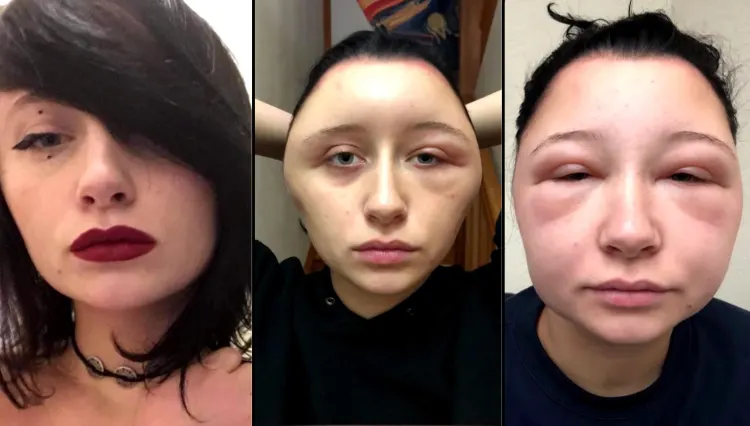
Estelle’s ordeal was painful and traumatic, but she survived. However, Tabatha McCourt wasn’t so fortunate. She died from an anaphylactic shock just 20 minutes after applying a hair dye containing PPD.
During an anaphylactic shock, the immune system overreacts to harmless substances like PPD, leading to symptoms like difficulty breathing, swelling of the face and throat, a sudden drop in blood pressure, and even loss of consciousness.
PPD is present in 90% of hair dyes despite 2-3% of the population being allergic to the compound.
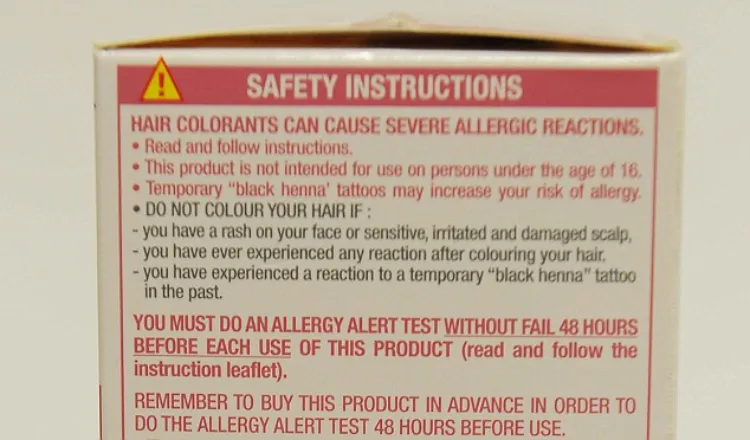
PPD is an effective oxidizing agent that deeply penetrates the hair follicle and shaft, making it essential for permanent and semi-permanent hair dyes.
However, it is also one of the most potent allergens and causes the majority of hair-dye allergic reactions.
However, as there are no approved alternatives for covering grey hair, PPD is present in 90% of hair dyes and 99% of permanent hair dyes, in a concentration of up to 6% in the EU and the USA.
PPD is omnipresent in hair dyes despite the estimates by the National Syndicate of Dermatologists in France that 2-3% of the population is allergic to PPD. It is an alarming number of people, considering half of the French population dye their hair at least once in their lifetime. In Britain alone, hair dyes are used 100 million times a year, of which 60% are used at home.
While hair dye kits come with instructions for a patch test, it’s not a foolproof test against allergens. There is no guarantee that your body will not react to PPD even after a non-triggering patch test.
In Estella’s case, she did an allergy test but only waited 30 minutes, though the instructions recommended waiting 48 hours before using the dye. This experience led her to campaign for bigger and more visible warnings and instructions on the packaging of hair dyes.















